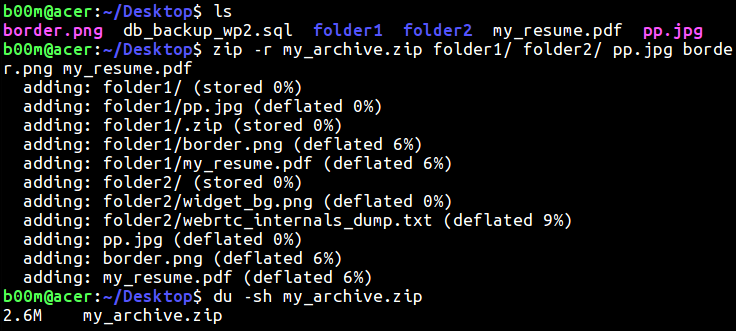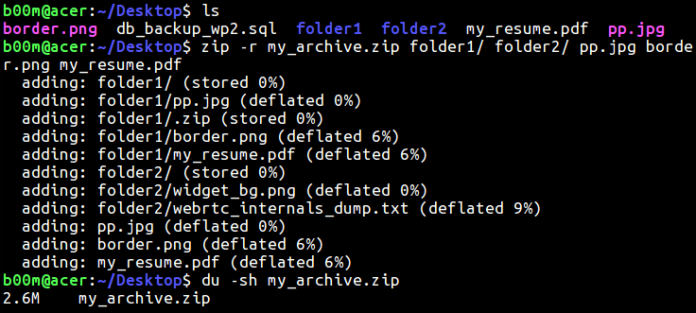
The Linux zip command is an essential tool for file compression and archiving in Unix-based systems. Whether you’re a system administrator, developer, or everyday Linux user, understanding how to effectively use the zip command can significantly improve your file management skills. This guide will walk you through the ins and outs of the zip command, from basic usage to advanced techniques, helping you become proficient in file compression on Linux.
What is the Zip Command in Linux?
The zip command in Linux is a utility used for packaging and compressing files. It creates .zip archives, which are widely compatible across different operating systems, making it an excellent choice for file sharing and storage optimization.
Basic Syntax and Usage
The basic syntax for the zip command is:
Here, ‘zipfile’ is the name of the archive you want to create, and ‘files_or_directories’ are the items you want to compress.
Compressing Files and Directories
To compress a single file you can use this command;
If you have multiple files that need compression you can just list the file names as shown below;
In order to compress the entire directory:
The ‘-r’ option stands for recursive, which is necessary for including all files and subdirectories.
Advanced Zip Options
- Add files to an existing archive:
zip -u archive.zip newfile.txt - Exclude specific files or patterns:
zip -r archive.zip directory/ -x "*.jpg" - Create a split zip archive for large files:
zip -s 100m -r archive.zip large_directory/ - Add a password to the zip file:
zip -e archive.zip file.txt - Use maximum compression:
zip -9 -r archive.zip directory/ - Add files without compressing them:
<br />zip -0 archive.zip largefile.iso - Display progress during compression:
zip -r -v archive.zip directory/
Extracting Zip Files
While the primary focus of this article is the zip command, it’s worth noting that you use the unzip command to extract files:
To extract to a specific directory:
Troubleshooting Common Issues
- “zip: command not found”: Install zip using your package manager (e.g., sudo apt install zip on Ubuntu).
- “zip warning: name not matched”: Check for typos in file or directory names.
- “zip error: Nothing to do!”: Ensure you’ve specified files or directories to compress.
- “cannot create archive”: Check write permissions in the destination directory.
- “zip I/O error”: Verify that you have enough disk space and that the source files are accessible.
Best Practices
- Use meaningful names for your zip files to easily identify contents.
- Regularly test your zip files to ensure they’re not corrupted.
- When compressing large directories, use the ‘-v’ (verbose) option to monitor progress.
- For sensitive data, always use encryption (‘-e’ option).
- Consider using split archives for very large files to avoid size limitations.
- Use the ‘-u’ (update) option when adding files to existing archives to avoid duplicates.
Zip vs. Other Compression Tools
While zip is versatile and widely compatible, Linux offers other compression tools:
- gzip: Faster and better compression, but only for single files.
- tar: Often used with gzip (tar.gz files) for directory compression.
- 7zip: Offers better compression ratios but less universal.
The choice depends on your specific needs, such as compression ratio, speed, or cross-platform compatibility.
Why Does This Matter?
Mastering the Linux zip command is crucial for several reasons:
- Efficient storage: Compress files to save valuable disk space.
- Faster file transfers: Smaller files are quicker to upload or download.
- Data organization: Group related files into a single archive.
- Cross-platform sharing: .zip files are recognized by most operating systems.
- Backup creation: Quickly create compressed backups of important data.
By understanding the nuances of the zip command, you can manage your files more effectively, streamline your workflows, and improve your overall productivity in Linux environments.
To summarize this, the Linux zip command is a powerful and flexible tool for file compression and archiving. From basic file compression to advanced features like encryption and split archives, zip offers a wide range of functionalities to meet various needs. By understanding how this command works, you’ll be well-equipped to manage your files efficiently, save storage space, and facilitate easier file sharing across different platforms. Remember to always verify your archives after creation and choose the appropriate compression options based on your specific requirements.
Related Articles
ZIP command in Linux with examples
How to Use the Linux Zip Command to Compress and Uncompress Files Quickly
More Articles from Unixmen





